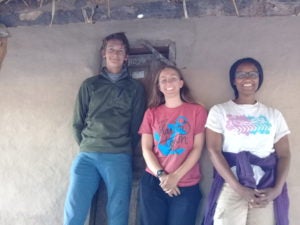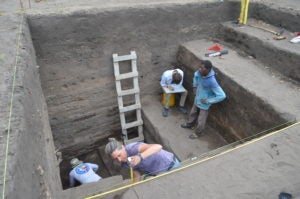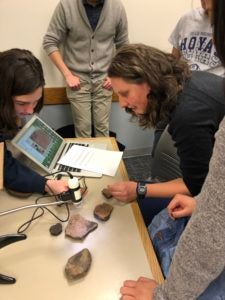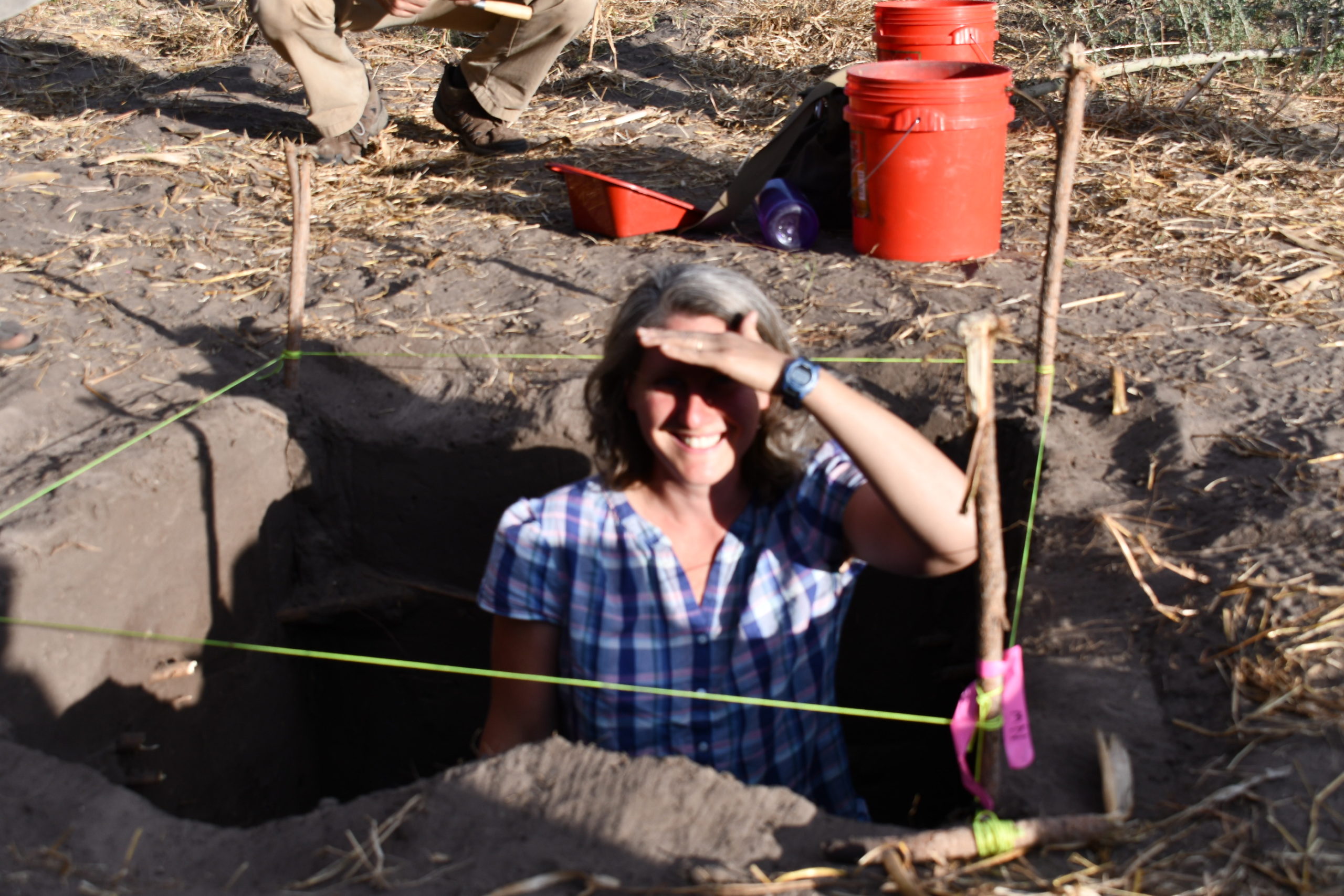History and Science: Georgetown Professor Shows Why Collaboration Across Disciplines Important
Professor Kathryn de Luna is one of four faculty members in the Department of History to participate in the new HyperHistory Hub as part of the Georgetown Humanities Initiative. This related pair of courses are the first of their kind to incorporate the same hard sciences into their curriculum that de Luna has included in her humanities-focused research.
Changing History
Historians are often thought of as lone researchers, tackling questions of the past through the humanities and so-called ‘soft’ sciences. De Luna, who has a Ph.D. in history and is trained in archaeology and linguistics, is looking to change that narrative.
Her research at the university is focused on the study of languages in east, central and southern Africa and what they can tell us about the past. Languages, as evidenced by words like “googled,” are dynamic, constantly evolving and responding to changes in the lives of those speaking them.

Andrew Sedlack (C’20), Peri Beckerman (C’20), and Yemiserach Benyame (C’18) at the ‘Hoya House’ in Basanga village, Central Province, Zambia in 2018 during the inaugural year of the Zambia Field School program
While de Luna is able to estimate shifts in social structures through the study of new words added to languages, she wanted to supplement her linguistic data by incorporating chemistry and light physics into her archeological research, a technique known as archaeometry. For this reason, de Luna applied for a Mellon New Directions Fellowship, which she has been completing at Yale.
This fellowship provides funding to those in the humanities or social sciences for methodological training that complements a Ph.D. but is outside of the individual’s area of doctoral training. De Luna chose to use her New Directions Fellowship to study the physical and chemical properties of “sparkliness” in pottery sherds and other artifacts made during the period of her current research project, the late first millennium.
She is using methods such as micro CT scanning, hyperspectral imaging and portable x-ray fluorescence to study the paste composition and the gloss or specularity of the sherds of pottery which were fired and painted with iridescent materials like mica that gave the pottery a particular shine.
“These materials do not have a steady gloss like that of nail polish or the outside of a car,” says de Luna. “The makers of these pieces wanted them to flash, and be more percussive or explosive in their shininess. New words appeared in makers’ languages to describe this new sensory effect and many of the new words also indicate that there were social and emotional attachments to the sensory effects sustained by potting as well as other, related pyrotechologies, all of which were ultimately manipulated by politicians to create changes in regional political culture and political organization.”

De Luna measuring wall profiles
This type of work is particularly important for those studying the history of societies that did not have written records and time periods predating the reach of oral traditions.
“Interdisciplinarity is crucial for work like mine,” says de Luna. “By using these different scientific methods to quantify the “sparkliness” of these artifacts, I have been able to not only back up but also supplement my linguistic data with materials science approaches to the archeological record.”
De Luna says that learning from our pasts is incredibly important for us as individuals to understand our present day.
“It is vital that we know how people manipulated technology to create objects that affected others because these experiences quite literally shaped perceptions of reality in that past,” says de Luna. “For that reason, the interplay of technology, the senses, and emotions is a potent political mix, even today. By studying this, we not only gain new insights into why we ascribe certain values to certain objects today but also understand the slow coproduction of culture, the body, and the brain over long periods of time.”
The historian says that this intersection is at the cutting edge of not only humanities research but also research in the soft sciences, such as cultural psychology, and the hard sciences like the molecular effects of stress.

De Luna with students in HyperHistory course analyzing sherds
“Because so many of the disciplines working at the nexus of culture, mind, and body are trying to understand change over time or space, weaving together science and humanities approaches to the past yields payoffs to both science and humanities approaches to social issues in the present.”
Unique Opportunities
De Luna is not the only ‘science literate’ historian at Georgetown. Dagomor Degroot, John McNeill and Timothy Newfield also incorporate various scientific data and methods into their research, which, according to de Luna, makes them one of the largest concentrations of historians using and even generating scientific data to answer historical questions in any history department.
“None of us wants to become chemists or physicists, and there certainly are limits to what we can do as outsiders,” says de Luna. “But, as historians, we ask different questions and this can shape research across fields, especially when we actively participate in collaborations or even train as practitioners ourselves, thereby generating new data to answer questions overlooked in the ‘home’ disciplines of particular methods.”
The shared interest in applied scientific research of these historians is what lead this group of professors to create the HyperHistory Hub courses.
“We wanted to find ways to teach each other the skills that we were learning in our research, but we also wanted to share this with undergraduates and our graduate students so that they could understand the importance of interdisciplinary work,” says de Luna.
The HIST 099 / 704 combined courses are taught alternatively by each of the four professors and are supplemented with labs led by graduate students. In addition to lectures by the Georgetown faculty, other scientists and archaeologists from across the country lead workshops to introduce their techniques, methods, and sources to the students.
“This course is an opportunity for our students to become good consumers of humanities scholarship and of science at the same time,” says de Luna. “If you want to dip your toes into a field you have not yet explored, this course is designed for you.”
